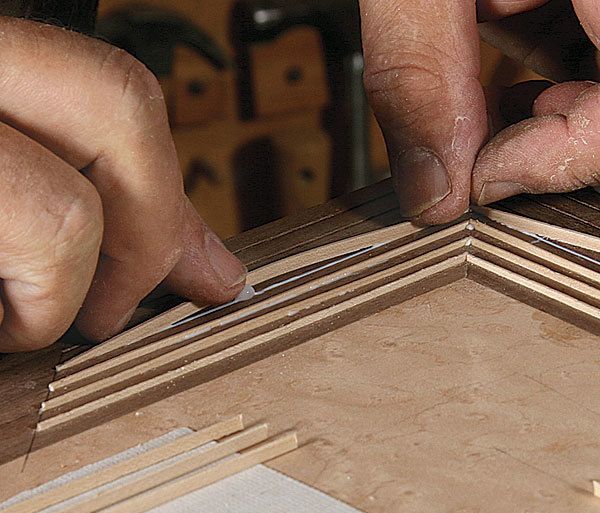String Inlay Made Easy
Two simple, shopmade tools make the slits and the stringing
Synopsis: String inlay is a decorative technique that can add instant appeal to a chair back, tabletop, jewelry box, or other piece of furniture. And while you could use a router to cut the narrow recess required for this accent, Michael Fortune prefers a shopmade cutter he creates from a card scraper. It allows you to work efficiently but without the risk of mistakes that a power tool can pose. It also puts you in control of the width of the inlay. Here, Fortune shows you how to create the inlay tool and how to choose the right wood, cut the strips for the string inlay, and install it.
I love my power tools, but sometimes in woodworking the most effective way of doing something does not involve plugging in a tool. That’s certainly the case with string inlay. This decorative technique can light up a chair back, a tabletop, or a jewelry box, instantly increasing its appeal—and its value, by the way.
I create the slits for string inlay with a simple, shopmade cutter. It takes me an hour or so to modify a standard card scraper into a custom tool that flawlessly cuts straight or curved slits in flat stock and just as easily handles slits on convex or concave surfaces. You could use a router to cut some of these slits, but the process is far more laborious, requiring jigs and offset fences and many light passes to cut a narrow slit without snapping the fragile bit. And that’s not to mention the ever-present peril: routers are not known for small, easily repaired mistakes. Using a shopmade inlay tool allows you to work briskly with confidence and to position your fence right along the line where you want the inlay—there’s no need to follow the edge of the workpiece as with other string-inlay techniques. It also puts you, not the router-bit manufacturer, in control of the width of the inlay.
I generally make my string inlay about 1⁄16 in. wide. This gives it enough presence to be noticeable without being overpowering. On a small, delicate box I might go thinner, and on a large table wider. Whatever the width I want, I start by finding a piece of metal that matches it. Scrapers are available in various thicknesses, giving you some options for the width of your slits. After making the inlay tool and cutting the slits, I make inlay strips to fit. I bring the strips to final thickness with another shopmade tool—a wooden jig that turns another card scraper into a thicknessing device.
String inlay works equally well in solid wood or veneered panels (and plywood, though you need to go lightly to avoid lifting the thin veneer). When string inlay runs across the grain in a solid-wood workpiece, however, the design must account for wood movement. I limit lines of cross-grain inlay to 31⁄2 in. or so in length, adding small accent details between the short sections of inlay.
For the full article, download the PDF below.
Fine Woodworking Recommended Products

Bahco 6-Inch Card Scraper

Whiteside 9500 Solid Brass Router Inlay Router Bit Set























Log in or create an account to post a comment.
Sign up Log in